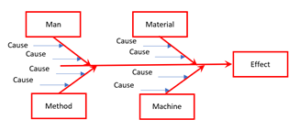
Understanding Purpose is Pivotal to Success
Purpose, begins with the End in Mind
How do you define Success? We know organizational success is based on many variables. Why are some organizations more successful than others? The answer is simple.
Defining the organization’s “purpose” is pivotal to its success. In recent years, purpose has lost is meaning, but understand purpose has a simple definition: The reason an organization exists. Thus, Purpose becomes the organization’s “Why?”
It should be the first thing done by an organization; to daily confirm its purpose and assure that its workforce is fully engaged in the success of its stated purpose.
A simple process flow diagram for Purpose could include the process input described as customer need and the process output as customer delight.
The Flow of Purpose

An organization must seek feedback in an ongoing dialog with the customer to evaluate customer delight and the organization’s effect on customer need, and this dialog’s impact on Purpose.
Again, it is essential that the organization fully understands its Purpose and have an unwavering focus on this reason. Purpose has foundational importance in driving organizational success.
The Integration of the Whole: The next big step in understanding Purpose
Be warned, these next steps may take a bit of imagination to comprehend the overall picture.
To answer the question: “Why is an organization successful? the organization must identify the reason the organization exists (purpose), its overall function (mission), desired future state (vision), values, and core competences. Collectively, the answers to these questions become the key elements of its future success.
Next, we must think of our purpose (reason) as the product goods and / or product services (Think of it as a big birthday present, with pretty wrapping paper and bow.), then accept the mission (function) as the method used to move our purpose toward its vision (desire).
Below is an illustration depicting this iterative process. The Purpose is the cargo, Mission is the wagon carrying the purpose toward the destination (Vision). We must always understanding that Purpose is the ongoing focus (that valuable birthday present) and the whole reason we are even discussing mission and vision.
The Integration of the Whole

Now, let’s put wheels on this wagon. If you have not yet detected the underlying similarity to Kaoru Ishikawa’s cause and effect diagram (see below), let me make it more apparent. Ishikawa’s diagram begins with the four cause factors: man, material, method and machine, collectively having an overall effect on the output of a process.
Ishikawa’s Cause and Effect Diagram

Ishikawa’s Cause and Effect Diagram is a classic problem-solving method, and I believe works well in this “visual picture.” If we consider Mission as the base structure of our wagon (i.e., the bed of the wagon), then man, material, method, and machine can become the wheels of the wagon. Ultimately, they become the “cause” for the mission to transport its Purpose toward the organization’s Vision (the resulting effect).
In summary, the Mission (wagon) transports the Purpose (cargo) toward the Vision (destination).
This integration picture[i] could have further elaborations:
- Strategic Advantages and Core Competencies provide the horsepower to move the wagon and its cargo forward
For illustration purposes these are two huge Clydesdale horses named “S-Assy” and “Ce-Ce”
- Strategic Challenges is the stubborn pack mule “Stay-Ce” tied to the back of the wagon always tending to balk, slow progress, and constantly requiring attention from the team.
- Leadership – Person 1 clears the path and eliminates roadblocks
- Strategy – Person 2 keeps a focus on achievement, balance and progress according to plan
- Customers – Person 3 attends to Purpose and seeks careful adjustments to achieve success
- Knowledge – Person 4 provides the roadmap, monitors conditions, and informs others
- Workforce – Person 5 provides the resources and cultural environment to get things done
- Operations – Person 6 optimizes all work processes, manages data, and keeps work safe
- Results – Person 7 tabulates key performance indicators (KPI) to assure the desired movement toward success
I trust this information will help you refine and build new strength and maturity within your organization. A new post in the series Integration within the Organization is coming next week. Hope to see you there.
[i] Adapted and based on the Baldrige Criteria – 2021-2022 Baldrige Excellence Framework

Paul Dreiss
Quality Advisor
Paul Dreiss has a proven track record of establishing and revitalizing organizational quality systems in multiple industries and service organizations. Two areas of focus include: Quality Management System – Developed organizational policies, procedures and work instructions that your…